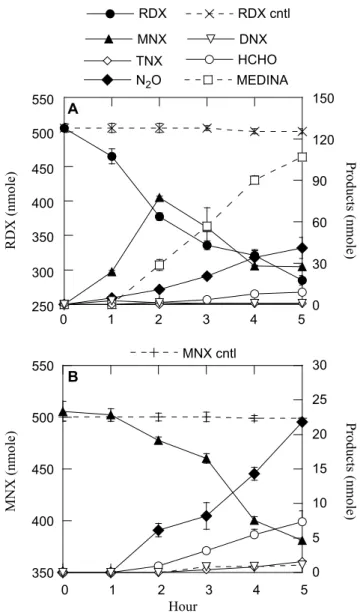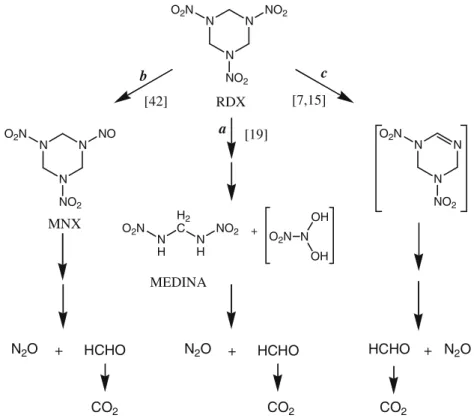Biodegradation of hexahydro-1,3,5-trinitro-1,3,5-triazine by novel fungi isolated from unexploded ordnance (UXO) contaminated marine sediment
Texte intégral
Figure




Documents relatifs
Le nombre de demandeurs d’emploi de catégorie 1+6 décroît de 0,6 % au mois de février (sont inscrits en catégorie 6 les demandeurs d’emploi ayant exercé une activité
With an influx overdensity of two times the mean, for which the streams are already well separated, the first stream carries on average 49 per cent of the total flux, the first
[r]
Our focus is on adeno-associated virus (AAV) and leniviral vectors (LV) and the dominant cell type used for manufacturing, human embryonic kidney (HEK) 293 cell lines. We
7 The lack of an efficient approach to production of pure CdTe MSQDs exhibiting single-dot optical properties including bandgap photoemission has inspired our efforts towards the
Une fois en haut, le joueur marque le nombre de points indiqué puis repositionne son jeton sur la case «
Colored compounds in biomass (intracellular, IC) and culture filtrate (extracellular, EC) for 20 isolates of marine derived fungi isolated around La Réunion Island, in mg eq..
A magnetometer survey of the area gave substantially poorer data, and a GPS survey was totally unsuccessful in mapping the buried ordnance. Given and